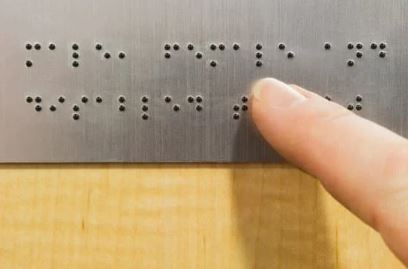
Disability Awareness: Understanding, Inclusive Language, and Best Practices for Employers and Peers
Disability awareness is essential for creating a respectful, inclusive society that values and empowers individuals with disabilities. Disabilities come in many forms—visible and invisible, physical and cognitive, temporary and permanent—and they are an important part of human diversity. From physical mobility challenges to sensory, intellectual, and mental health conditions, each person's experience is unique. To foster inclusive environments, especially in the workplace, understanding disability and practicing inclusive language are key. Here’s an overview of the types of disabilities, the challenges people face, and guidelines for inclusive communication.
Understanding the Wide Range of Disabilities

- Physical Disabilities
Physical disabilities can affect a person’s mobility, dexterity, or stamina. This includes individuals who may use wheelchairs, crutches, or other mobility aids. Conditions may include cerebral palsy, multiple sclerosis, or paralysis, among others. - Sensory Disabilities
These affect one or more senses—vision, hearing, or even touch. Blindness, low vision, deafness, and hard of hearing are common examples. People with sensory disabilities often use specific aids, such as hearing aids, guide dogs, or braille readers. - Intellectual and Developmental Disabilities
Intellectual disabilities impact cognitive functioning and adaptive behaviour, often identified through difficulties with reasoning, learning, or problem-solving. Examples include Down syndrome, autism spectrum disorder, and other developmental conditions. - Mental Health Conditions
Mental health conditions such as depression, anxiety, bipolar disorder, and schizophrenia can impact a person's ability to work, communicate, or socialize in typical ways. These conditions are often invisible and can be misunderstood or stigmatized. - Invisible or Hidden Disabilities
Not all disabilities are immediately noticeable. Chronic pain, diabetes, epilepsy, and autoimmune conditions are some examples of disabilities that may not have visible symptoms but can still impact daily life. - Learning Disabilities
Learning disabilities affect how individuals process information. Dyslexia, dysgraphia, and ADHD are examples. People with these conditions may need alternative methods to complete tasks or may require extra time to process information. - Neurodivergent Conditions
Neurodiversity is a concept that celebrates variations in brain function and behaviour as normal aspects of human diversity. Autism, ADHD, and dyspraxia are examples where neurodivergent individuals may think, learn, and process information differently but not necessarily be limited in their abilities.
The Power of Language: Practicing Inclusive and Respectful Communication

Language shapes our perceptions and, by extension, how people with disabilities are treated and valued. Inclusive language respects the dignity of individuals with disabilities and avoids reinforcing negative stereotypes. Here are some key guidelines:
- Use Person-First Language (PFL) Where Appropriate
This means putting the person before the disability, such as saying “person with a disability” rather than “disabled person.” This emphasizes that the individual is more than their disability. Some specific examples include:- "Person who uses a wheelchair" instead of "wheelchair-bound."
- "Person with autism" instead of "autistic person."
- Acknowledge Identity-First Language (IFL) Preferences
Identity-first language places the disability first (e.g., “autistic person”), which some individuals prefer as a source of identity and pride. Always respect an individual's preference regarding language, as it can vary widely. - Avoid Language That Marginalizes or Stigmatizes
Avoid terms like "suffering from," "afflicted with," or "victim of," as these imply pity or negativity. For example:- Say “person with epilepsy” instead of “epileptic” or “suffers from epilepsy.”
- Be Mindful of Terms That Imply Limitation
Terms like “confined to a wheelchair” suggest that a mobility aid is restrictive, rather than supportive. Instead, use "uses a wheelchair," which accurately describes how the person moves. - Use Inclusive, Everyday Language
Avoid words like “normal” to describe people without disabilities, as it implies that those with disabilities are “abnormal.” Opt for terms like “non-disabled” or “typical development.” - Practice Empathetic Communication
When communicating with someone with a disability, be patient, listen actively, and avoid assumptions. If a person has a speech impediment, for example, listen without interrupting or trying to finish their sentences. - Be Direct and Use Clear, Simple Language
If you’re unsure about how to address a disability, ask politely and without assumptions. For instance, if you’re not sure whether someone needs help, it’s best to ask, “Is there anything I can help you with?” rather than assuming they need assistance.
Best Practices for Employers: Creating an Inclusive Workplace

For employers, creating an inclusive workplace goes beyond just compliance with regulations. It’s about fostering an environment where everyone feels valued and can thrive.
- Implement Accessible Facilities and Technology
Ensure that all facilities are accessible to people with physical disabilities, including ramps, elevators, and accessible restrooms. For employees with sensory disabilities, consider providing assistive technologies, such as screen readers, visual alarms, or captioning on videos. - Promote an Inclusive Work Culture
Encourage team-building and diversity training to build empathy and understanding among employees. This reduces stigma and promotes inclusivity in the workplace. - Provide Reasonable Accommodations
Reasonable accommodations allow employees to perform their job functions comfortably and effectively. This could include flexible work hours, remote work options, or adaptive equipment based on individual needs. - Create Clear Communication Channels
Designate a point of contact or an HR representative to discuss accommodation requests confidentially. Ensure that all employees are aware of how to access support if they need accommodations. - Avoid Assumptions About Ability
Treat employees based on their skills and contributions rather than assumptions about what they may or may not be able to do. Give them the autonomy to perform tasks, providing support as needed, without making assumptions based on their disability. - Emphasize Growth and Development
People with disabilities should have equal access to growth opportunities, such as promotions, leadership roles, and training programs. Offering mentorship or development programs can ensure they have access to career advancement. - Leverage Inclusive Hiring Practices
Make hiring materials and applications accessible and ensure interview processes are welcoming and inclusive. Focus on skills and experience rather than disabilities, and avoid questions that centre around the applicant’s condition.

Conclusion
Fostering a culture of disability awareness and inclusive language is not only respectful but essential for a diverse, thriving society. Employers, colleagues, and peers can all contribute by understanding the range of disabilities, adopting respectful language, and following inclusive practices. Creating an environment of inclusion isn’t just beneficial for individuals with disabilities; it enriches the workplace and community as a whole, making it a space where everyone has the opportunity to succeed and feel valued.


